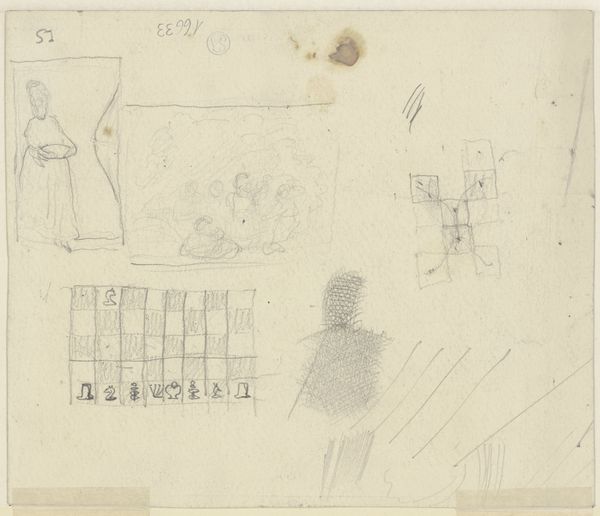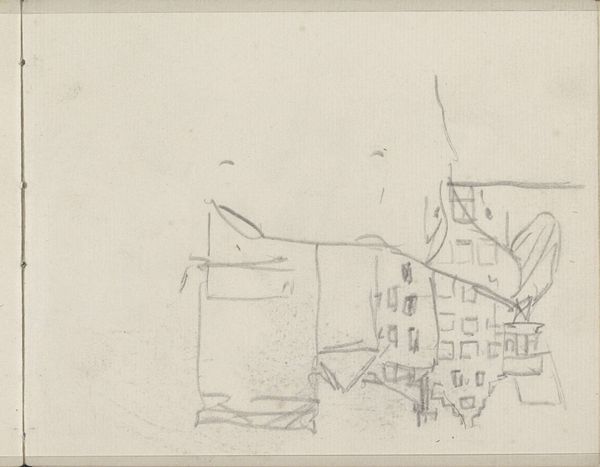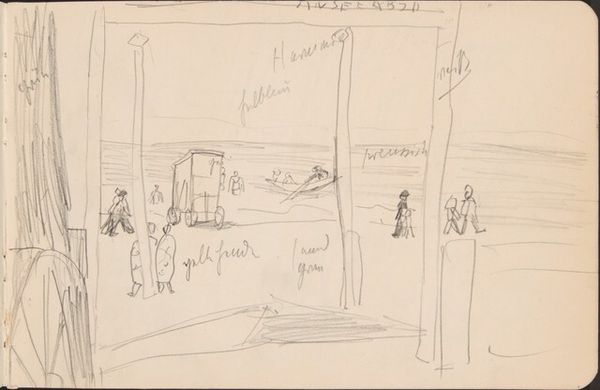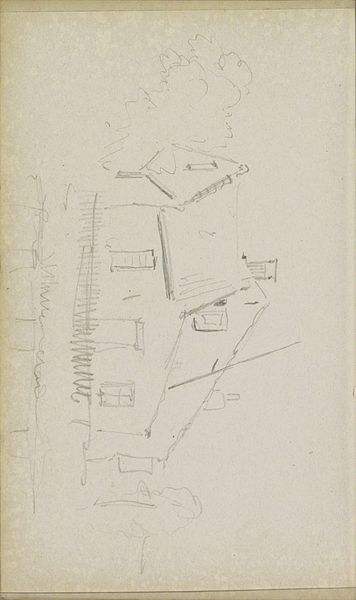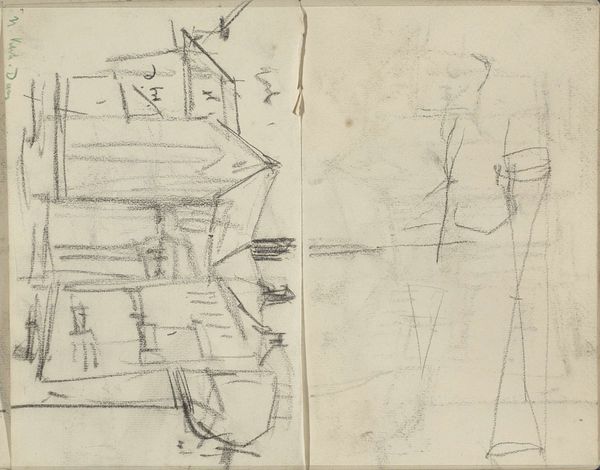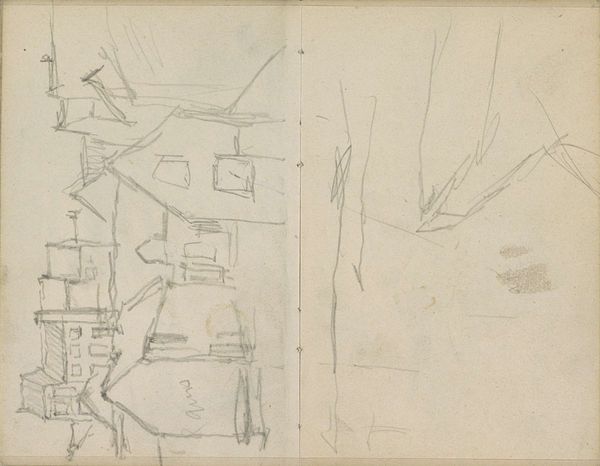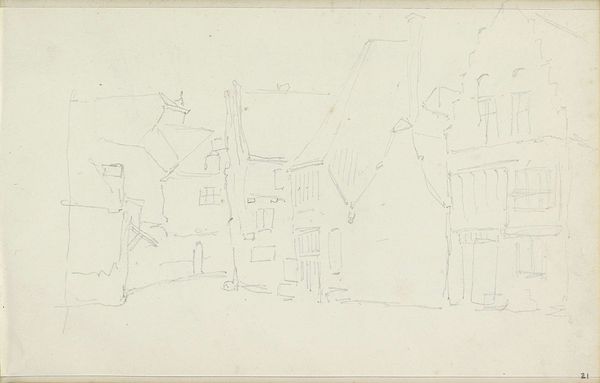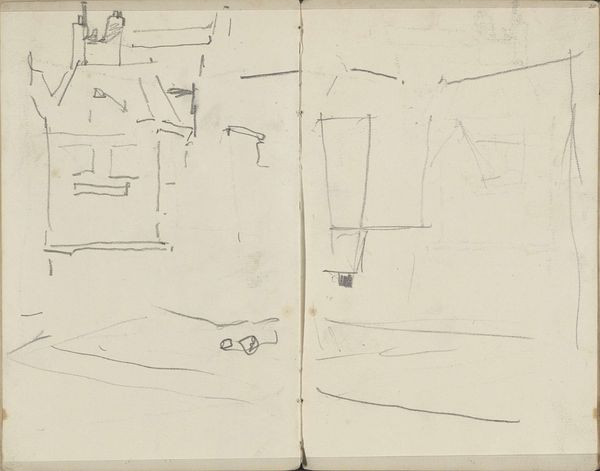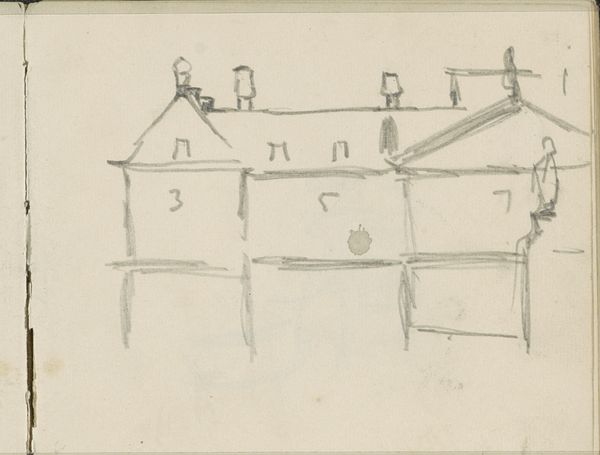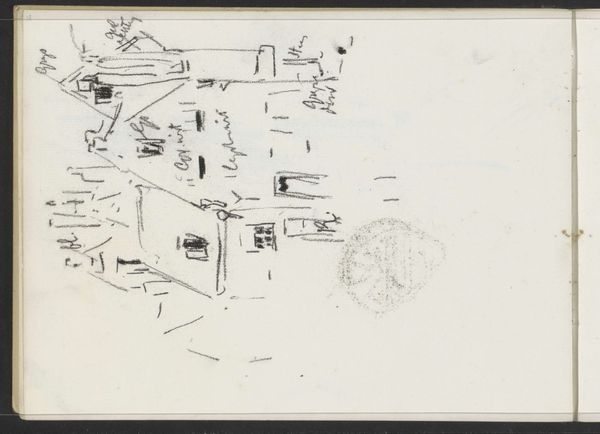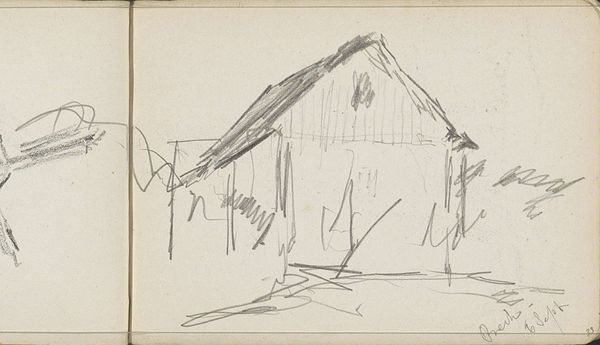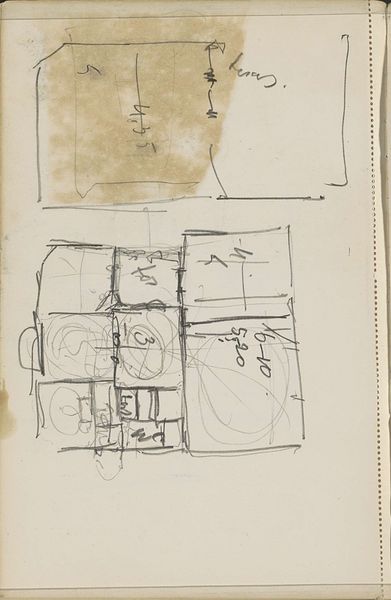
drawing, pencil
#
drawing
#
landscape
#
figuration
#
pencil
Dimensions: height 162 mm, width 197 mm
Copyright: Rijks Museum: Open Domain
Curator: Here we have "Church and Figures," a pencil drawing made by Julie de Graag sometime between 1880 and 1887. It’s currently held in the collection of the Rijksmuseum. What are your first thoughts? Editor: The image certainly has a dreamlike quality to it. The sketched lines give it an ephemeral almost childlike presence. There’s something hauntingly familiar about this little townscape. Curator: Yes, de Graag’s style evokes a sense of primal innocence, perhaps a search for an earlier, more direct connection to the sacred. There’s an honesty, too, that resonates, given that this was made during a time when access to religious expression for women and marginalized communities was heavily policed. Editor: Looking at the stark lines depicting the figures, one in the foreground that resembles a simple blade, the marching procession, and the geometric shapes of the church, I wonder about the symbolism here. Were churches seen as imposing architectural spaces? Is there commentary about societal rigidity in de Graag’s construction? Curator: Absolutely. We can read these figures as representative of social structures in late 19th century Dutch society, controlled by conservative religious values. Perhaps those marching figures, deliberately spare, signal a kind of constrained conformity. I see the "blade" to their left, also a sketch, as possibly threatening, like a crude tool or sword, perhaps standing in for that rigid social structure? Editor: It's intriguing how the figures become almost secondary, blurred behind the bold rendering of the buildings. It may reference how individuals are visually subordinated to monumental institutions, but here we have to assume de Graag intends to express that meaning visually with intention. It could be seen more clearly through journal entries or the historical context around the production. It suggests the dominance of architectural entities over the experiences of common individuals. Curator: Precisely. By positioning the buildings in such an imposing way, De Graag may invite us to question those structures—not simply as architectural feats, but as emblems of power. Editor: Looking at this sketch with fresh eyes, I notice more subtly layered meaning. Art indeed unlocks many dimensions of time! Curator: Indeed, thinking about her potential position as an outsider in such a deeply entrenched culture enriches the art on display. The sketch’s simple lines mask its layered complexities, providing multiple potential avenues for consideration.
Comments
No comments
Be the first to comment and join the conversation on the ultimate creative platform.
